Best flowering climbers – 10 top blooms for pergolas, arches and trellis
Flowering climbers will soften your backyard's hard landscaping, dressing it with color and even filling your garden with scent and wildlife
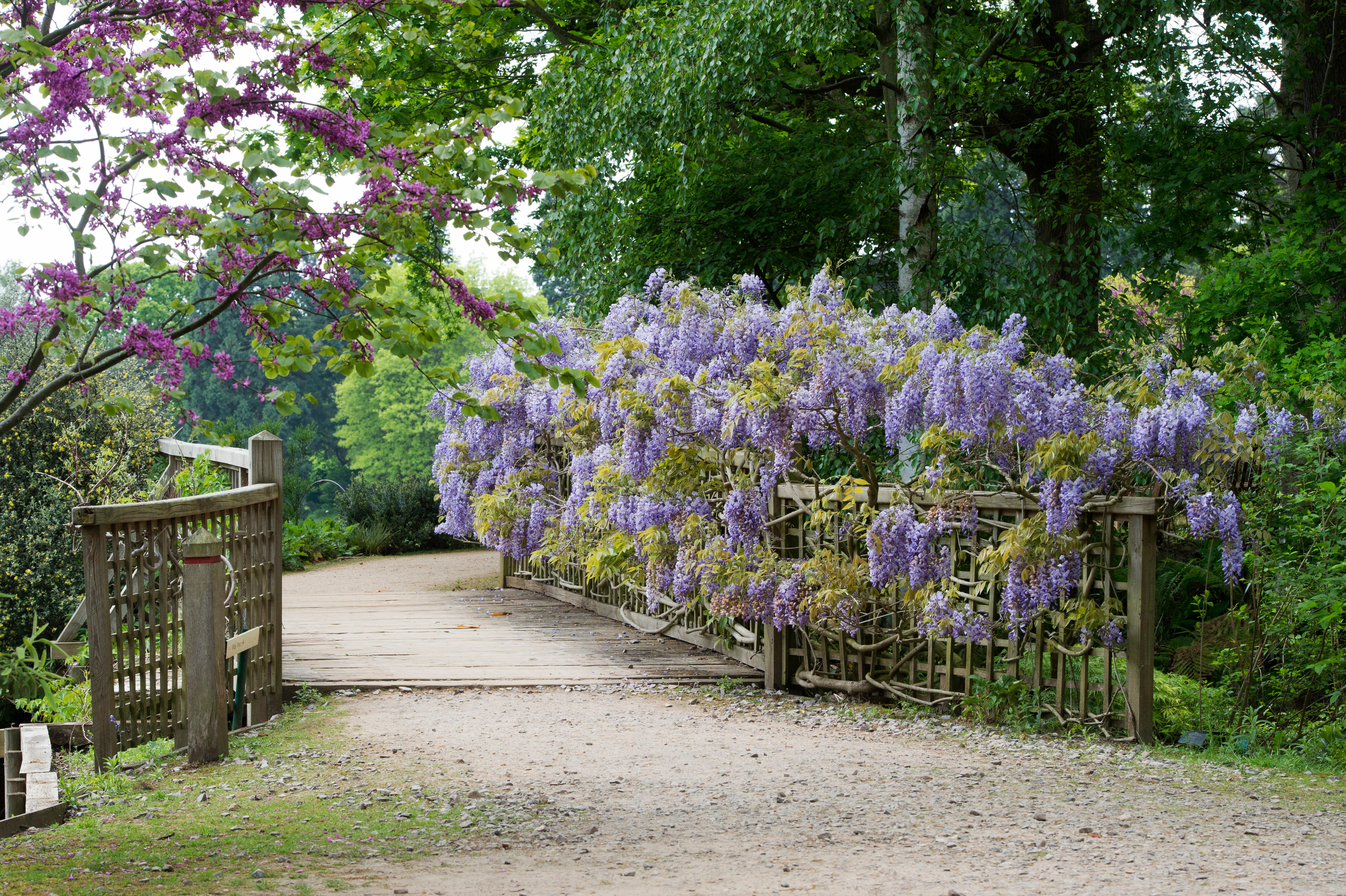

Squeeze more blooms into your garden by growing flowering climbers up walls, over pergolas, through trees, and along fencing. It's wonderful to go for a mix of flowering climbing plants to disguise hard landscaping and to provide a backdrop for your border planting.
Below, we have listed our pick of the best bloomers that scale dizzy heights – we think they're amongst the best climbing plants you can include in your garden design.
Best flowering climbers
From rampant flowering ramblers to delicate flowering climbers, this is our list of the best cottage garden plants to fill your backyard with if you want to recreate a typical English garden.
1. Best flowering climber for cottage garden charm
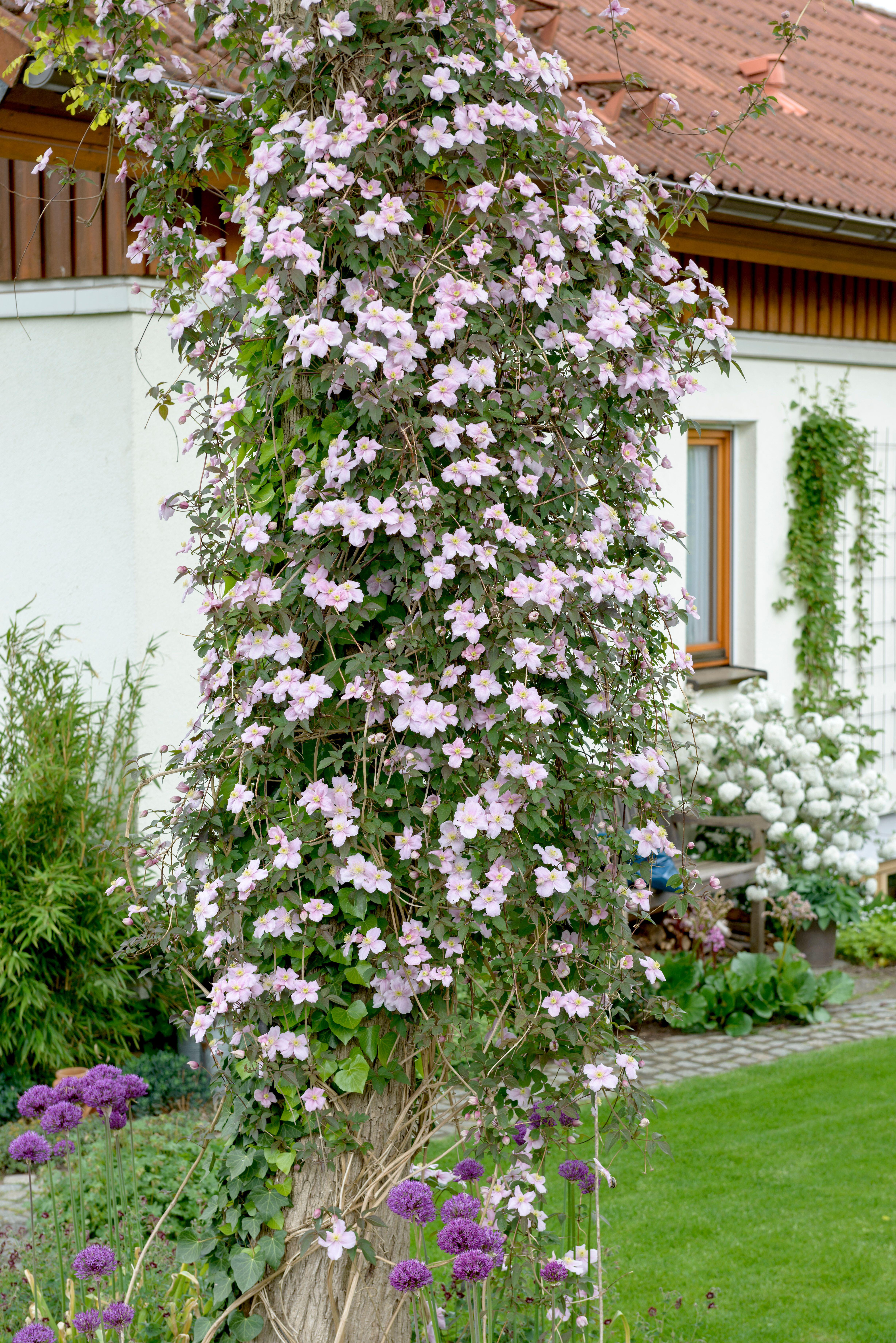
In May and June, the delicious vanilla-clove scent of this Clematis montana’s pink flowers hangs on the air.
‘I love Montanas,’ says Irene Kalina-Jones, landscape designer at Outside Space NYC in New York City. ‘I love the leaf and flower shapes. You can easily prune them (depending on the type) or don’t prune them and they are fine to rumble away.’
Grow clematis over a pergola, garage, or long fence, in well-drained, moist neutral to alkaline soil in sun or semi-shade. There are many to choose from when deciding which are the best clematis to grow.
Prune clematis' dense bronze foliage after flowering, if birds aren’t nesting in it.
Design expertise in your inbox – from inspiring decorating ideas and beautiful celebrity homes to practical gardening advice and shopping round-ups.
Height: 26ft (8m).
Hardiness: USDA 6-9 (UK H5).
2. Best flowering climber for scent

Rosa ‘Madame Alfred Carrière’ AGM – A glorious old Noisette rose, which produces a succession of richly scented blush to white flowers throughout summer and into fall.
‘This beautiful rose is a dear and has the most comforting scent, like the smell of your favorite grandmother,’ says California-based garden designer Laura Morton. ‘Madame sounds refined, but she is a thug and will want to take over, so support is key (provide a strong arbor) and groom the canes once a year, so she doesn’t become too unruly.’
It will grow on any aspect – even a north-facing wall, and the healthy, almost thornless foliage makes it suitable for archways.
Grow in rich, well-drained soil in sheltered sun or semi-shade.
Hardiness: USDA 5-9 (UK H5).
Height: 20ft (6m).
3. Best flowering climber for wildlife
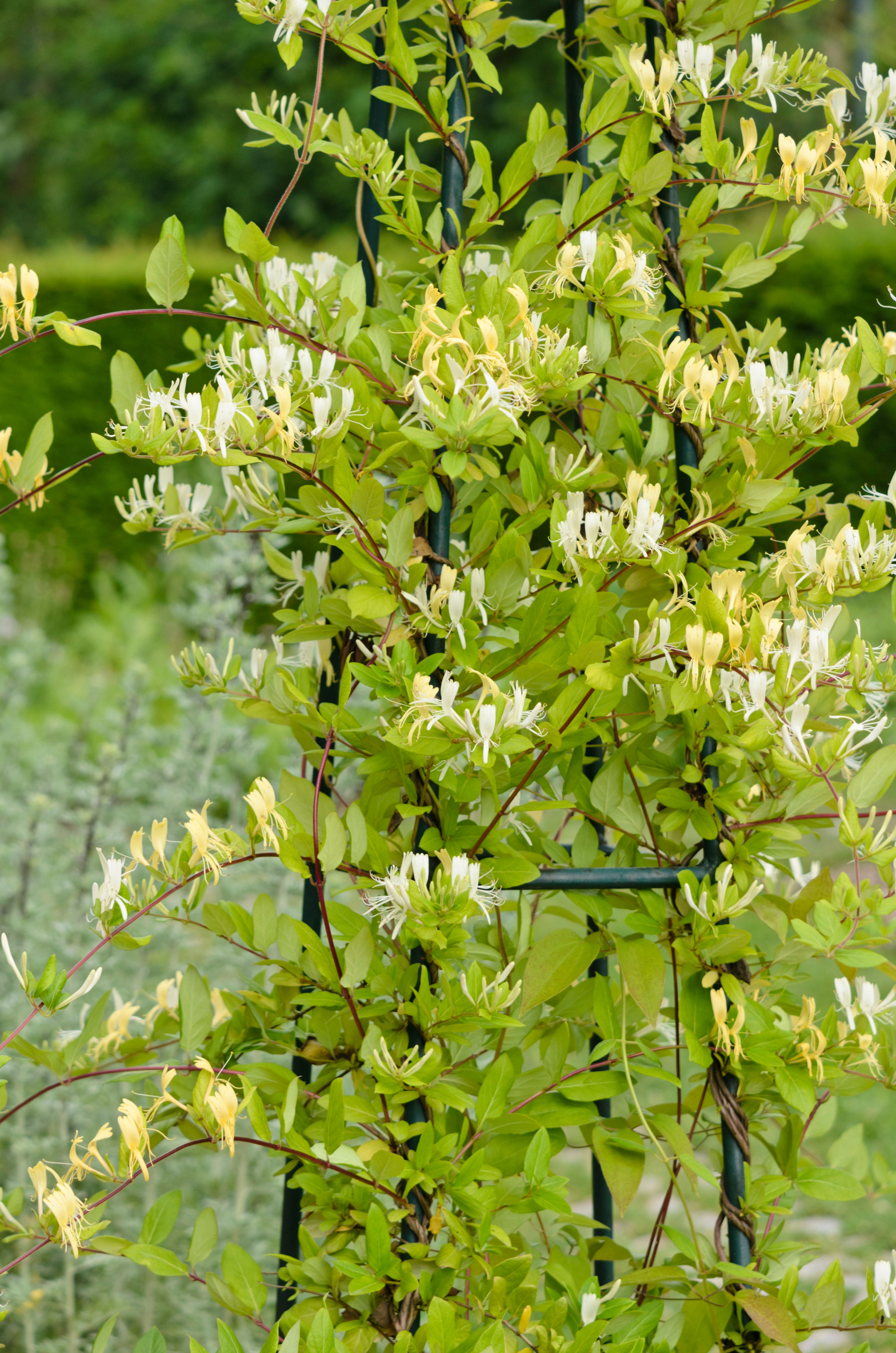
Lonicera periclymenum ‘Graham Thomas’ AGM - The ivory and gold flowers of this honeysuckle fill the air with scent on summer nights and attract hummingbirds and moths; then in fall, glossy red berries provide food for birds.
This reliable deciduous climber will weave its way through the metal lattice of an archway in well-drained, moist soil in semi-shade.
The US Forest Service says that L. periclymenum is not invasive in the States, but warns that some other forms (such as L. japonica) can be, so check what is invasive in your area before purchasing honeysuckle.
Hardiness: USDA 5-9 (UK H6).
Height: 20ft (6m).
4. Best flowering climber for large gardens
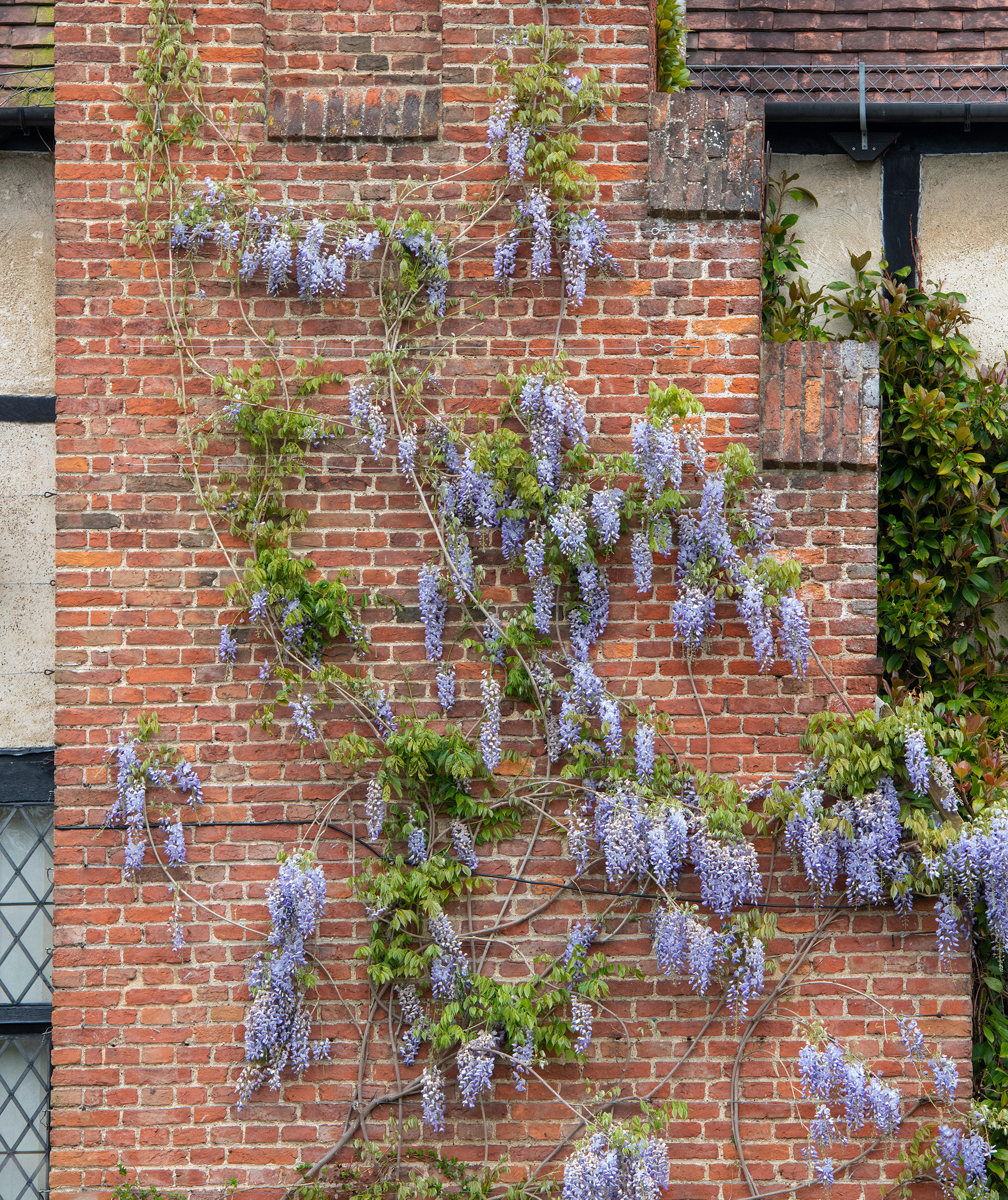
Wisteria sinensis ‘Prolific’ AGM – This beautiful Chinese wisteria is hung with racemes of blue-violet flowers (up to 12in/30cm long) that fill the air with incredible perfume in May and June.
Suitable for a sheltered south or west-facing wall or facade, in moist, fertile, well-drained soil.
Be wary of growing wisteria in states (such as Virginia) where W. sinensis is invasive, especially if you’re not prepared to prune wisteria biannually.
Hardiness: USDA 5-8 (UK H6).
Height: 30ft (9m).
5. Best flowering climber for scent
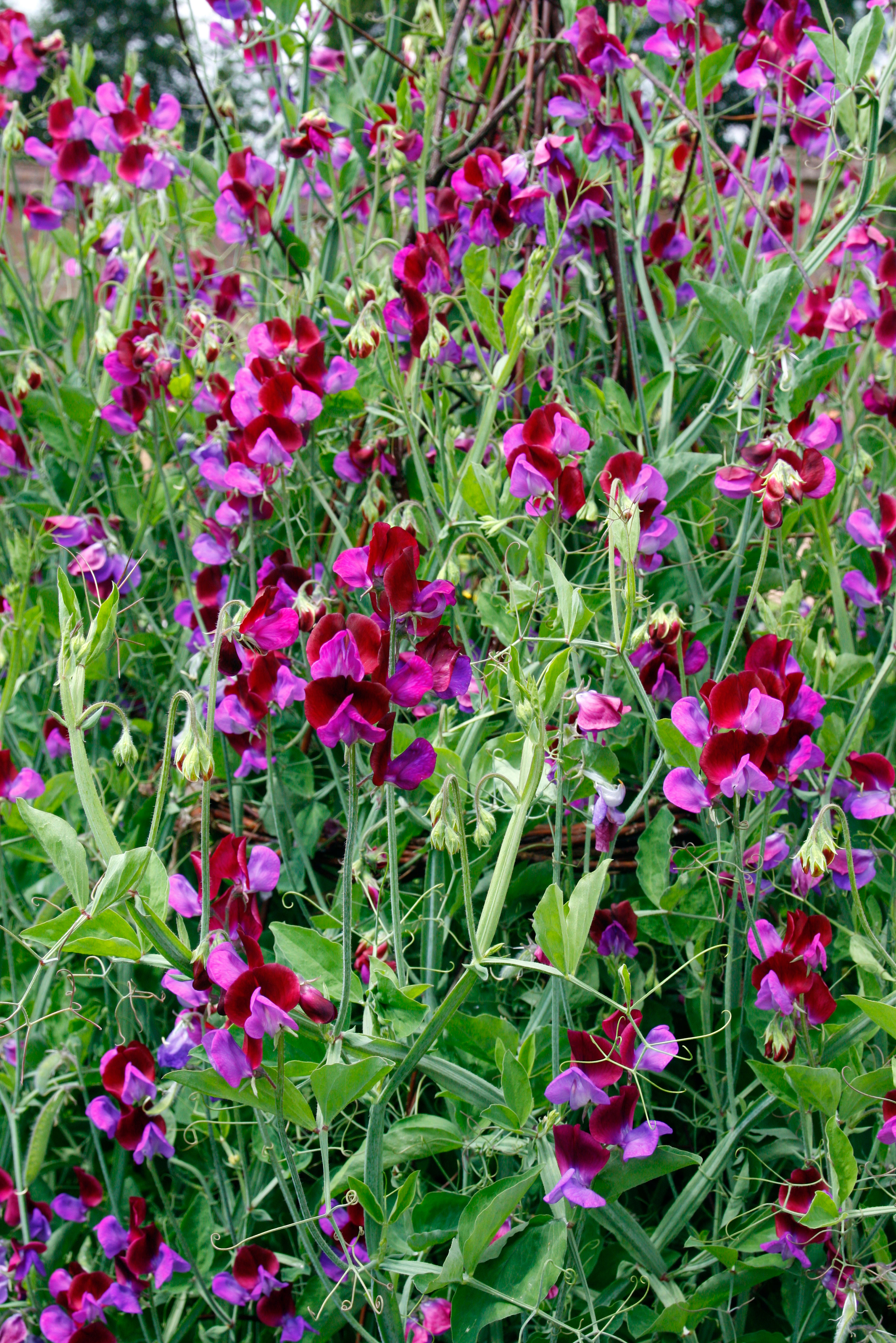
Lathyrus odoratus ‘Matucana’ AGM – An oldie but a goodie... ‘Matucana’ is arguably the best sweet pea for perfume. Burying your nose in a bunch of the violet-purple and port-wine flowers is a joy in summer.
‘This maroon and violet bicolor variety has an outstanding scent and is deservedly popular,’ says sweet pea guru and supplier Roger Parsons, who holds a National Collection of Lathyrus in the UK. ‘It was found in a South American garden in 1955 and given the Award of Garden Merit in 2014, and I have given it my highest scent rating!’
Being a cut-and-come-again plant, the blooms must be constantly cut for the vase to maintain flower production.
Sow this annual undercover now or in early spring and grow sweet peas throughout the summer.
Hardiness: USDA 2-11 (UK H3).
Height: 7ft (2m).
6. Best flowering climber for semi-shade
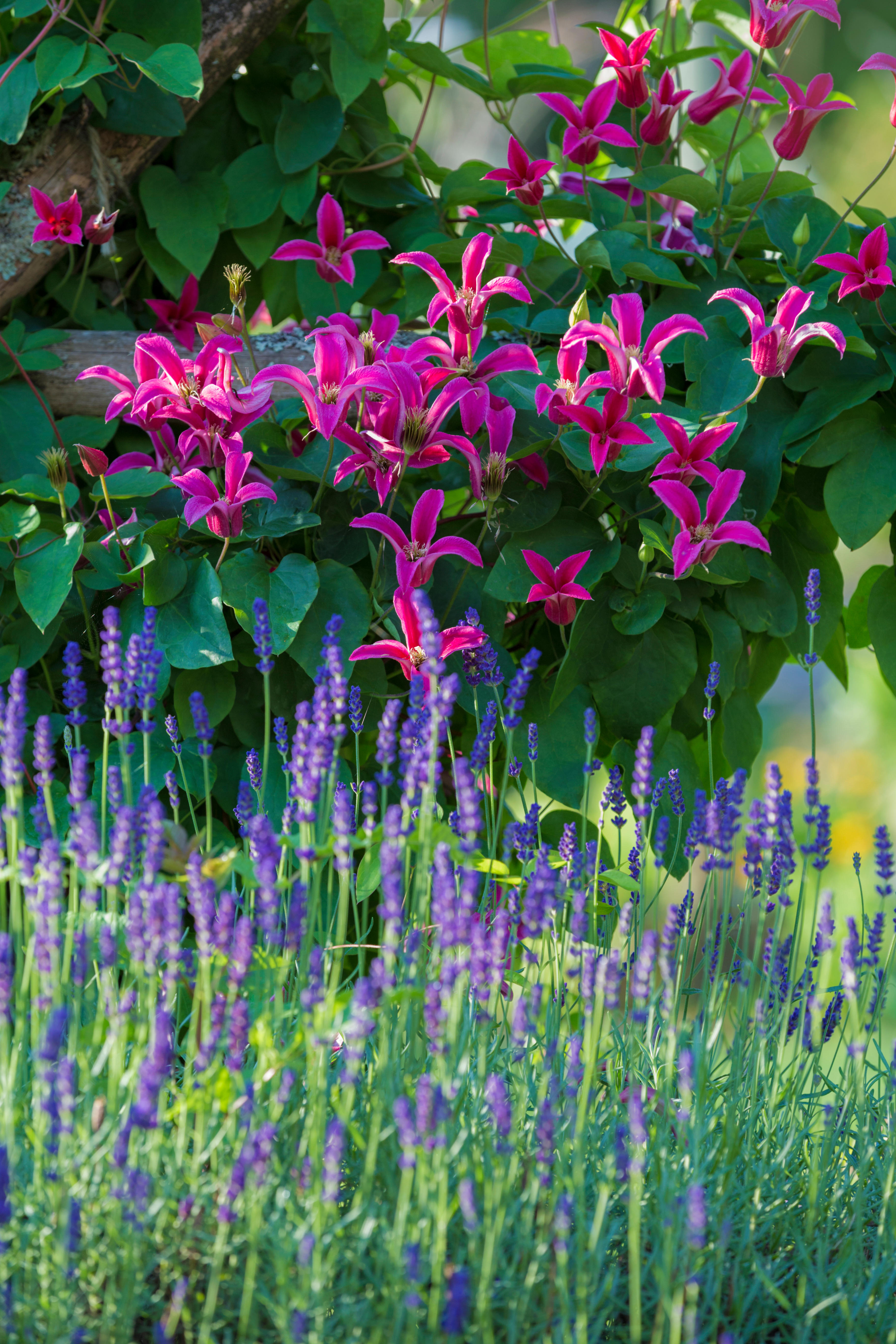
Clematis ‘Princess Diana’ AGM - A texensis clematis to provide a blast of color from July to October with its abundant hot-pink trumpet flowers.
‘I love summer clematis for a pop of intense color,’ says Irene Kalina-Jones, landscape designer at Outside Space NYC in New York City. ‘I like them on fencing or trellis or mixed with roses.’
Plant in well-drained, moist neutral to alkaline soil in sheltered sun or semi-shade; provide trellis for it to twine around, and ensure the roots are shaded by other plants.
In March, cut down to buds 8in (20cm) above the ground.
Hardiness: USDA 4-9 (UK H5).
Height: 7ft (2m).
7. Best flowering climber for color

Rhodochiton atrosanguineus AGM – This wonderful climber resembles a cloud of parasols floating through the air when it blooms in late summer and early fall.
The rich-pink and wine flowers are paired with heart-shaped leaves, in moist, well-drained soil in sun.
Enjoy outdoors in warm regions; in cold climates, grow in a conservatory or as an annual.
Hardiness: USDA 10-11 (UK H2).
Height: 10ft (3m).
8. Best flowering climber for evening perfume

Jasminum officinale ‘Devon Cream’ (syn. ‘Clotted Cream’) – This jasmine creates heady heights with a mass of starry cream flowers that release spellbinding perfume on summer evenings.
‘The evergreen or semi-evergreen climbing foliage and delicate white blooms of jasmine help screen or soften vertical walls and fences,’ says Oregon-based landscape architect and garden designer Bethany Rydmark, ‘and the summertime fragrance brings another sensory experience into the garden. Planting jasmine near a back deck or bedroom window can bring an effortless bit of aromatherapy to life, especially as you unwind at the end of the day.’
Grow jasmine in well-drained soil against a sheltered sunny wall. If necessary, trim after flowering, but avoid hard pruning as it can reduce flower power the following year.
In cold areas, protect the base with horticultural fleece in winter. In warm regions, it is evergreen.
Hardiness: USDA 7-10 (UK H5).
Height: 16ft (5m).
9. Best flowering climber for eye-catching blooms
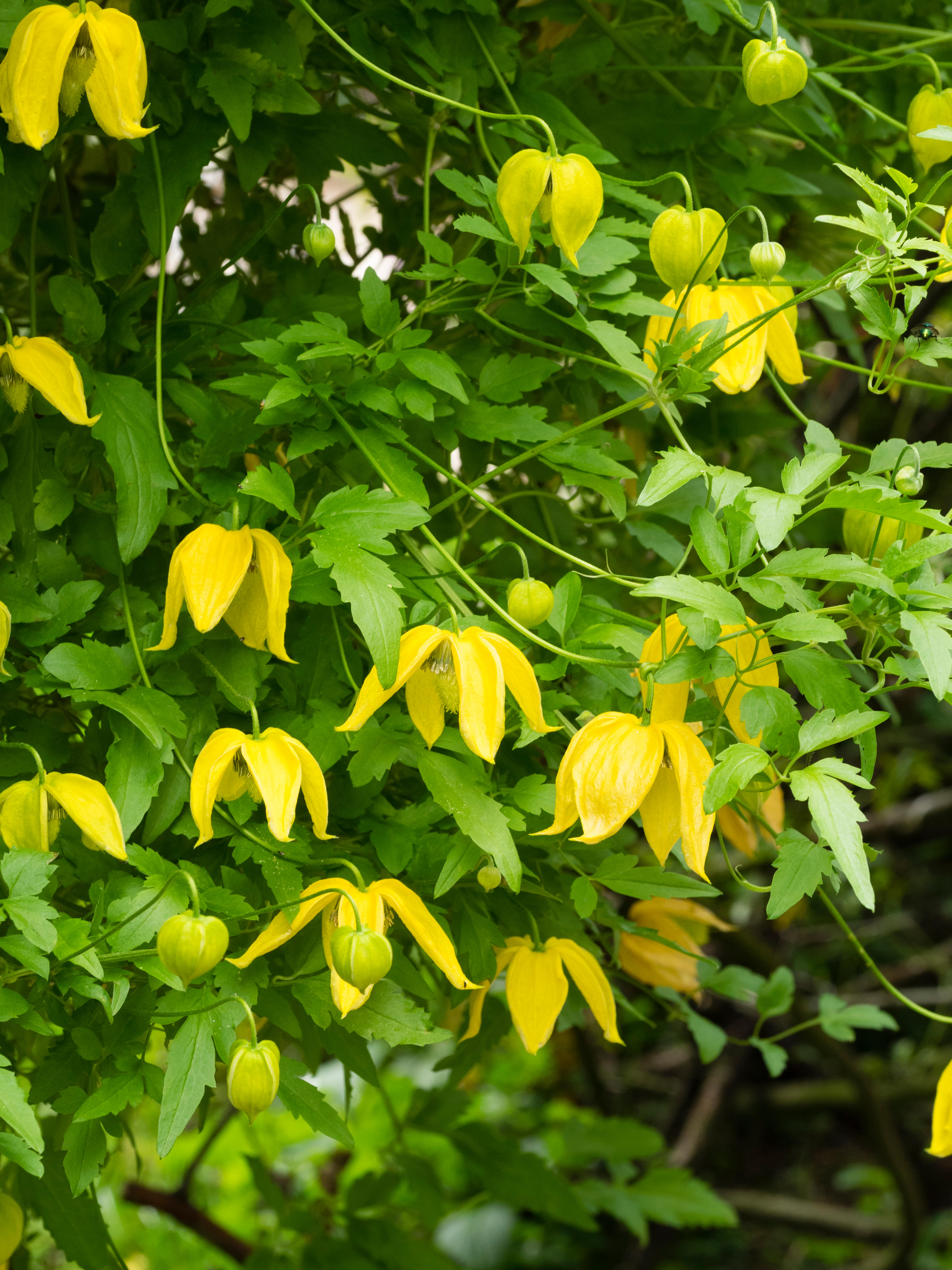
Clematis ‘Lambton Park’ AGM - In summer and early autumn, this tangutica clematis is hung with large lantern-shaped yellow flowers that look like lemon rind and smell of coconut.
‘There are so many different types of clematis vines and depending upon the species and cultivar, they can offer blooms starting in the spring and span into early fall,’ enthuses Maryland-based landscape architect and designer Kirsten Coffen.
‘Lambton Park’ is one of the best late-season forms and its blazing yellow flowers are followed by silky silver seedheads that catch the fall light.
Grow in moist, well-drained soil. The bulk of the plant needs to climb in sun or semi-shade, but the roots must be in the cool shade of other plants.
Hardiness: USDA 5-9 (UK H6).
Height: 10ft (3m).
10. Best flowering climber for training over shrubs
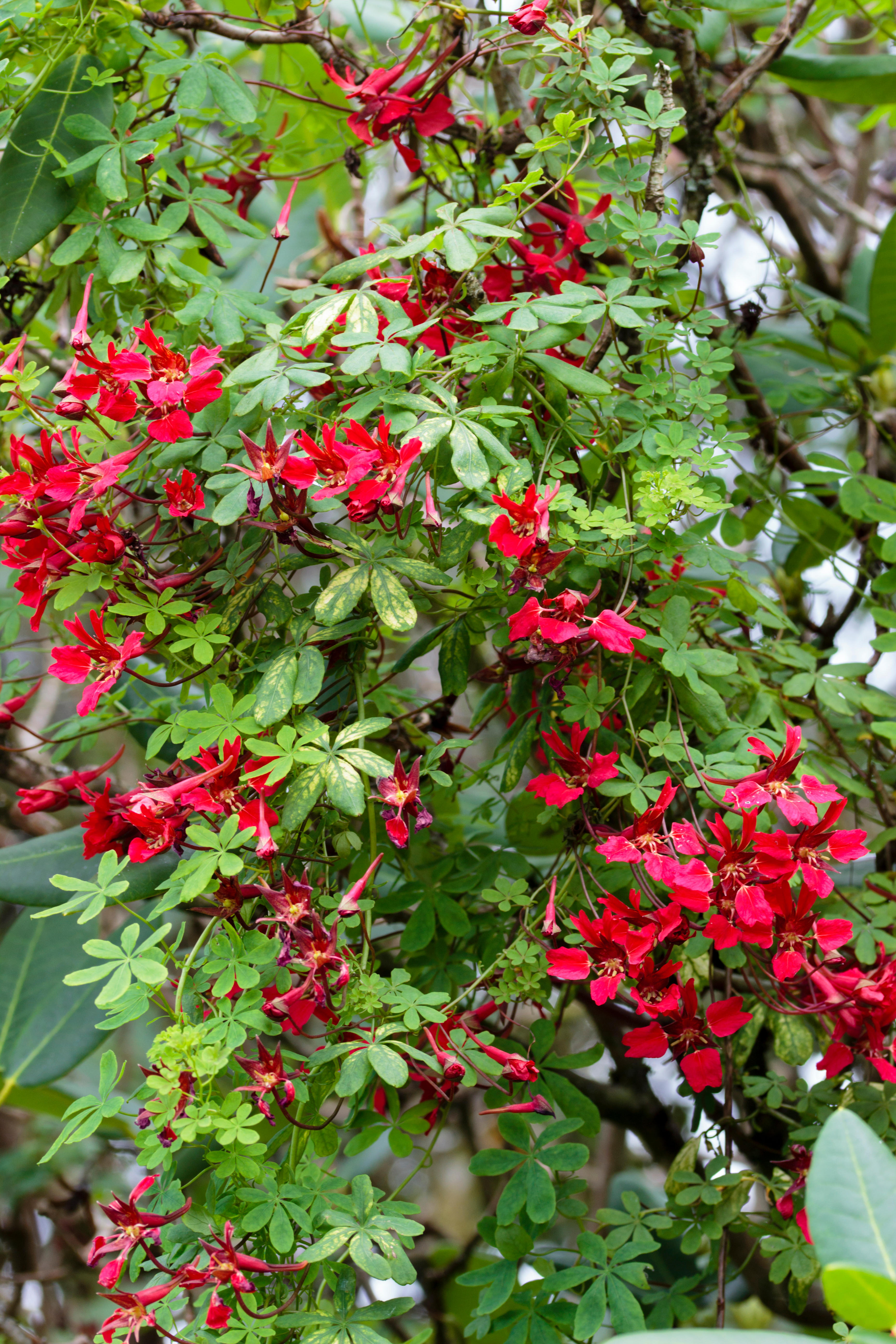
Tropaeolum speciosum AGM – The flame nasturtium likes to scramble over mature shrubs, and when it flowers, during summer and fall, its red flowers transform them into burning bushes with vivid-scarlet flames.
Excellent for livening up dull evergreens, such as boundary hedges.
Grow nasturtium in moist, well-drained neutral to acid soil in sheltered sun or semi-shade; like a clematis, its feet need to be in shade.
Height: 16ft (5m). USDA 8-10 (UK H5).
What is the best flowering climber?
The best flowering climber really depends on your needs and the size of your backyard, but we think the repeat-flowering climbing rose ‘Madame Alfred Carrière’ comes out tops. The beautiful blush-white flowers are romantic and fill the air with scent all summer long. Even in cool, temperate regions, it will often flower well into autumn, and – unlike many roses – it is tolerant of a north-facing wall and almost thornless.
What is the easiest flowering climber to grow
The mountain clematis (Clematis montana) is a doddle to grow and has the vigor to cover a pergola or summerhouse. Having an English-cottage-garden look, it adds informal charm to a garden. The gorgeous pink or white flowers fill the air with vanilla-clove perfume and the dense bronze foliage provides shelter and nesting for birds.

Lucy Searle has written about interiors, property and gardens since 1990, working her way around the interiors departments of women's magazines before switching to interiors-only titles in the mid-nineties. She was Associate Editor on Ideal Home, and Launch Editor of 4Homes magazine, before moving into digital in 2007, launching Channel 4's flagship website, Channel4.com/4homes. In 2018, Lucy took on the role of Global Editor in Chief for Realhomes.com, taking the site from a small magazine add-on to a global success. She was asked to repeat that success at Homes & Gardens, where she has also taken on the editorship of the magazine.